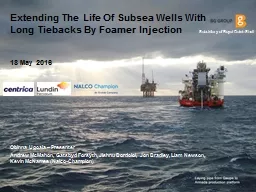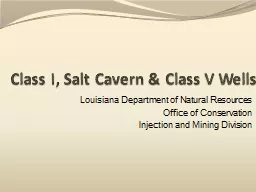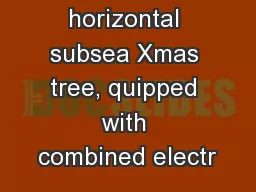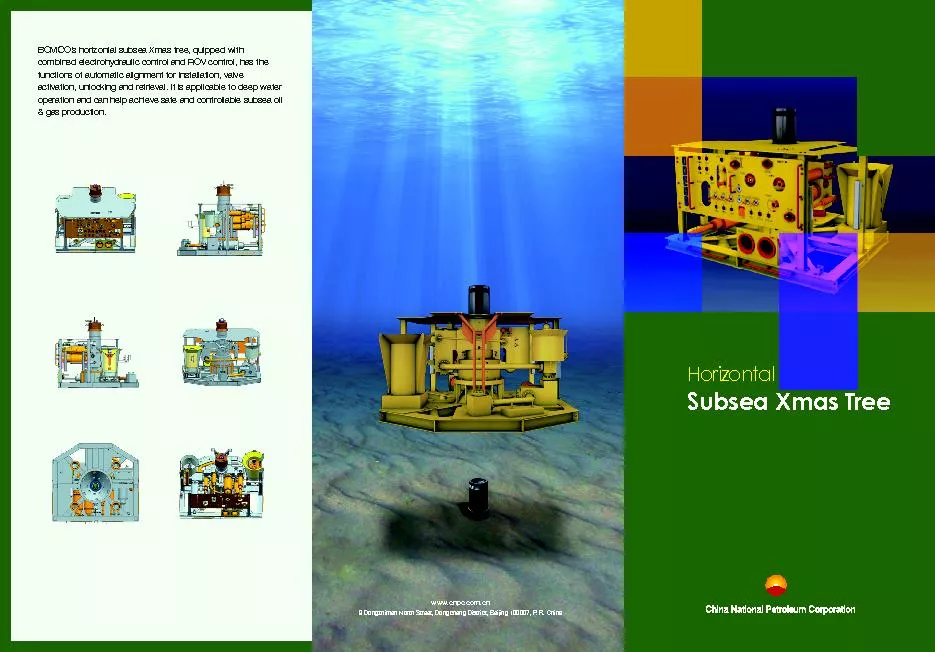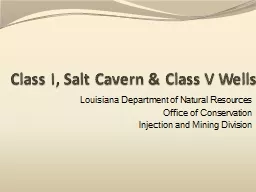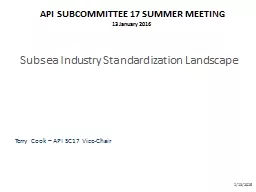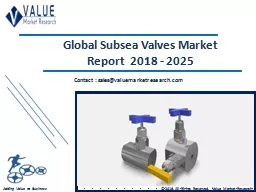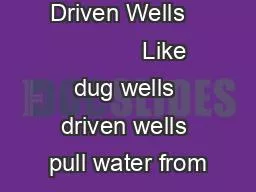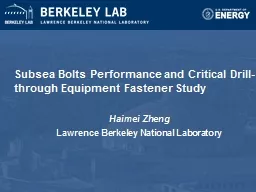PPT-Extending The Life Of Subsea Wells With Long Tiebacks By Fo
Author : myesha-ticknor | Published Date : 2017-03-19
18 May 2016 Obinna Ugoala Presenter Andrew McMahon Gatsbyd Forsyth Jishnu BordoIoi Jon Bradley Liam Newson Kevin McNamee NalcoChampion Subsidiary of Royal Dutch
Presentation Embed Code
Download Presentation
Download Presentation The PPT/PDF document "Extending The Life Of Subsea Wells With ..." is the property of its rightful owner. Permission is granted to download and print the materials on this website for personal, non-commercial use only, and to display it on your personal computer provided you do not modify the materials and that you retain all copyright notices contained in the materials. By downloading content from our website, you accept the terms of this agreement.
Extending The Life Of Subsea Wells With Long Tiebacks By Fo: Transcript
Download Rules Of Document
"Extending The Life Of Subsea Wells With Long Tiebacks By Fo"The content belongs to its owner. You may download and print it for personal use, without modification, and keep all copyright notices. By downloading, you agree to these terms.
Related Documents

